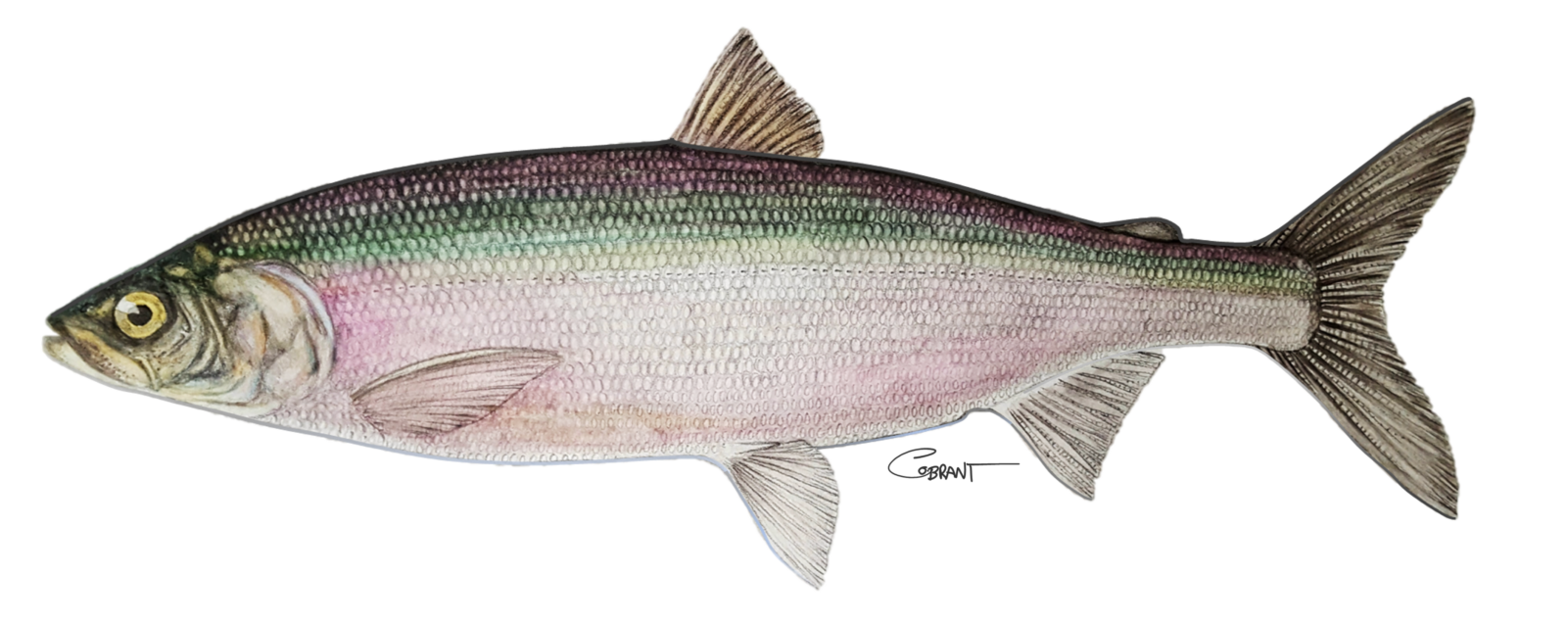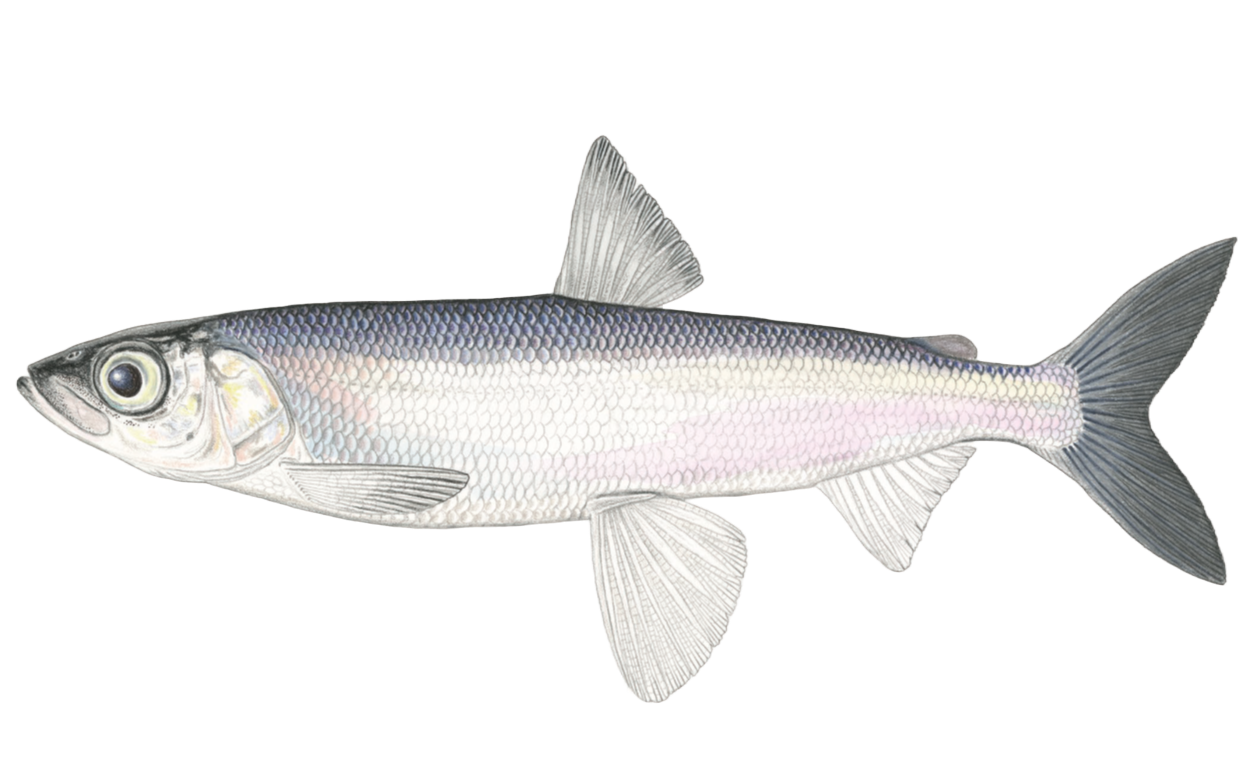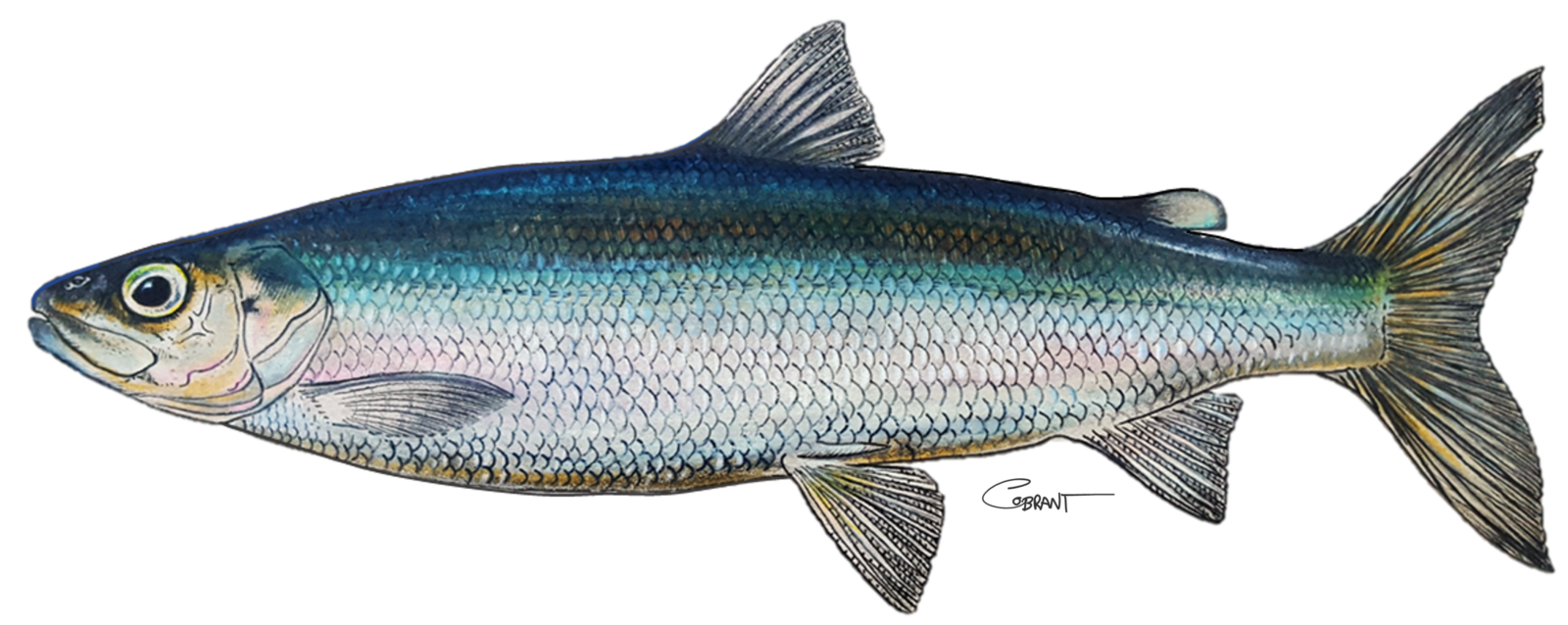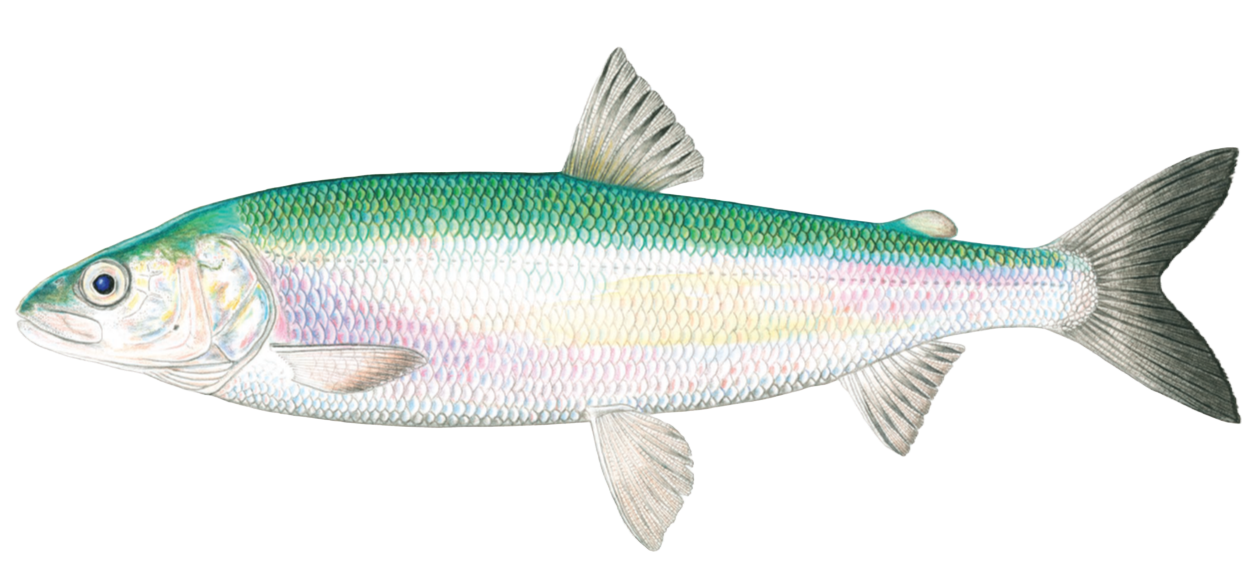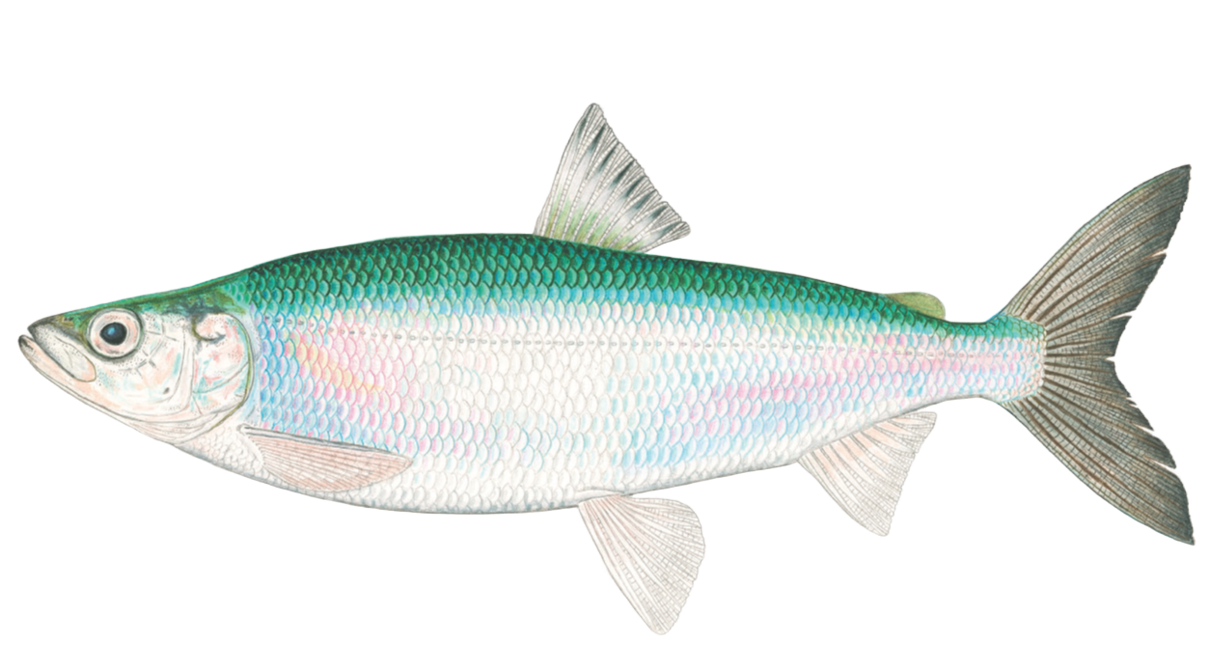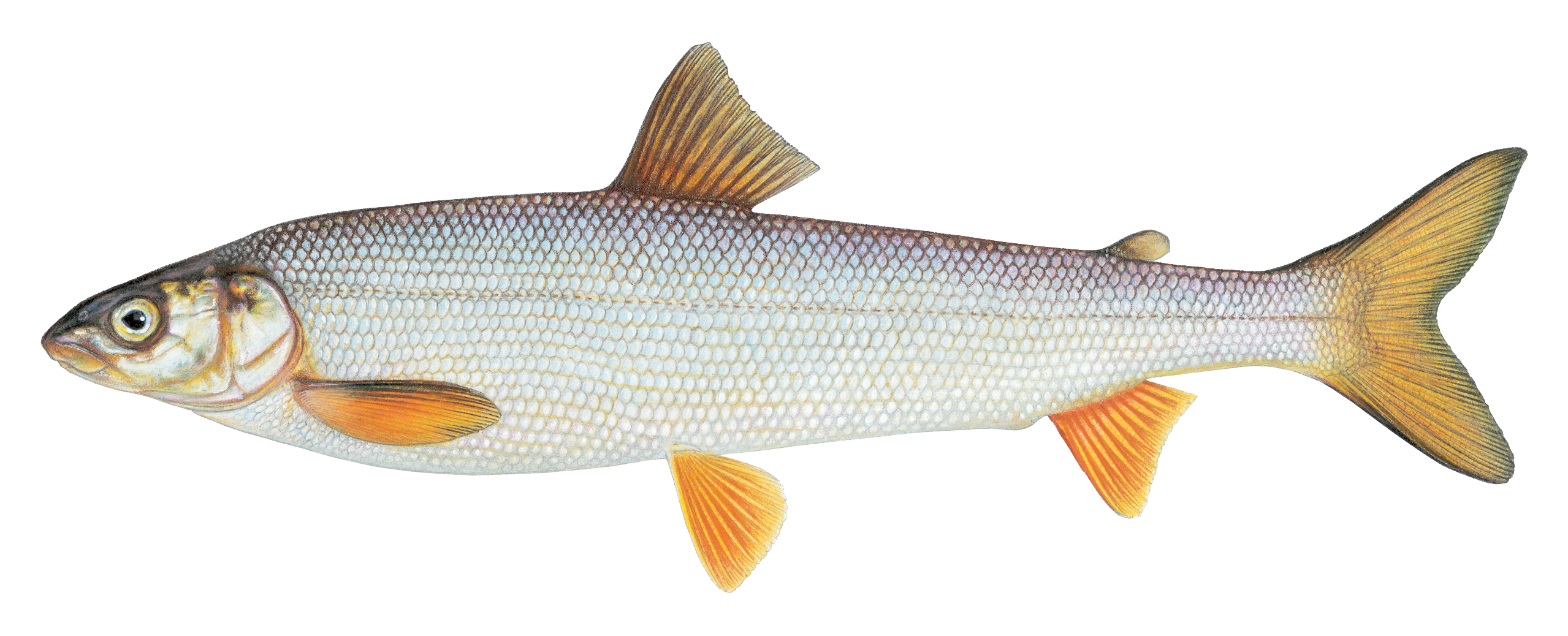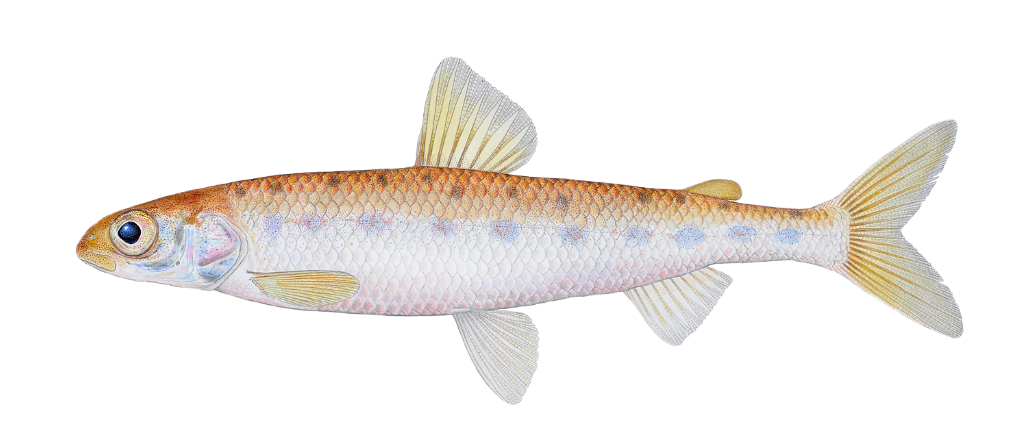What Are Coregonines?
Image Credit: Paul Vecsei
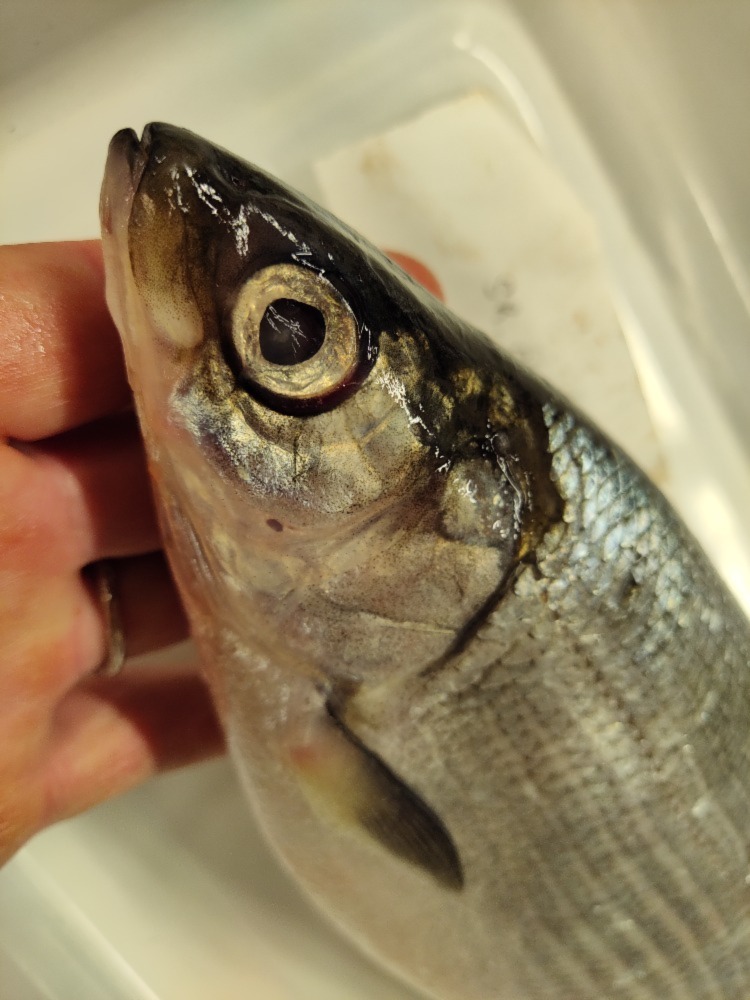
A cisco captured in the Spanish River (a tributary to northern Lake Huron), captured just below the dam, in fall 2022. Credit: Cory Brant.
Although the status of each species has not been fully assessed in both Canada (by the Species at Risk Act) and the United States (by the Endangered Species Act), at least one agency has determined Deepwater Cisco, Blackfin Cisco, and Longjaw Cisco to be classified as extinct. In Canada, Shortnose Cisco has been classified as endangered and Shortjaw Cisco as threatened. Some other species such as Kiyi have been extirpated in some of the lakes, but still are abundant in Lake Superior.
The eight ciscoes can be difficult to distinguish without a lot of practice and experience. Key diagnostic characters include the head and body shape, the length of the paired fins, and the number and shape of the gill rakers. Genetic tests can now help us confirm species identity of all species. Ecologically, the ciscoes tended to occupy different depths of the large and deep Great Lakes. They have remained different species by reproducing at different times of the year (fall, winter, and spring) and at different depths.
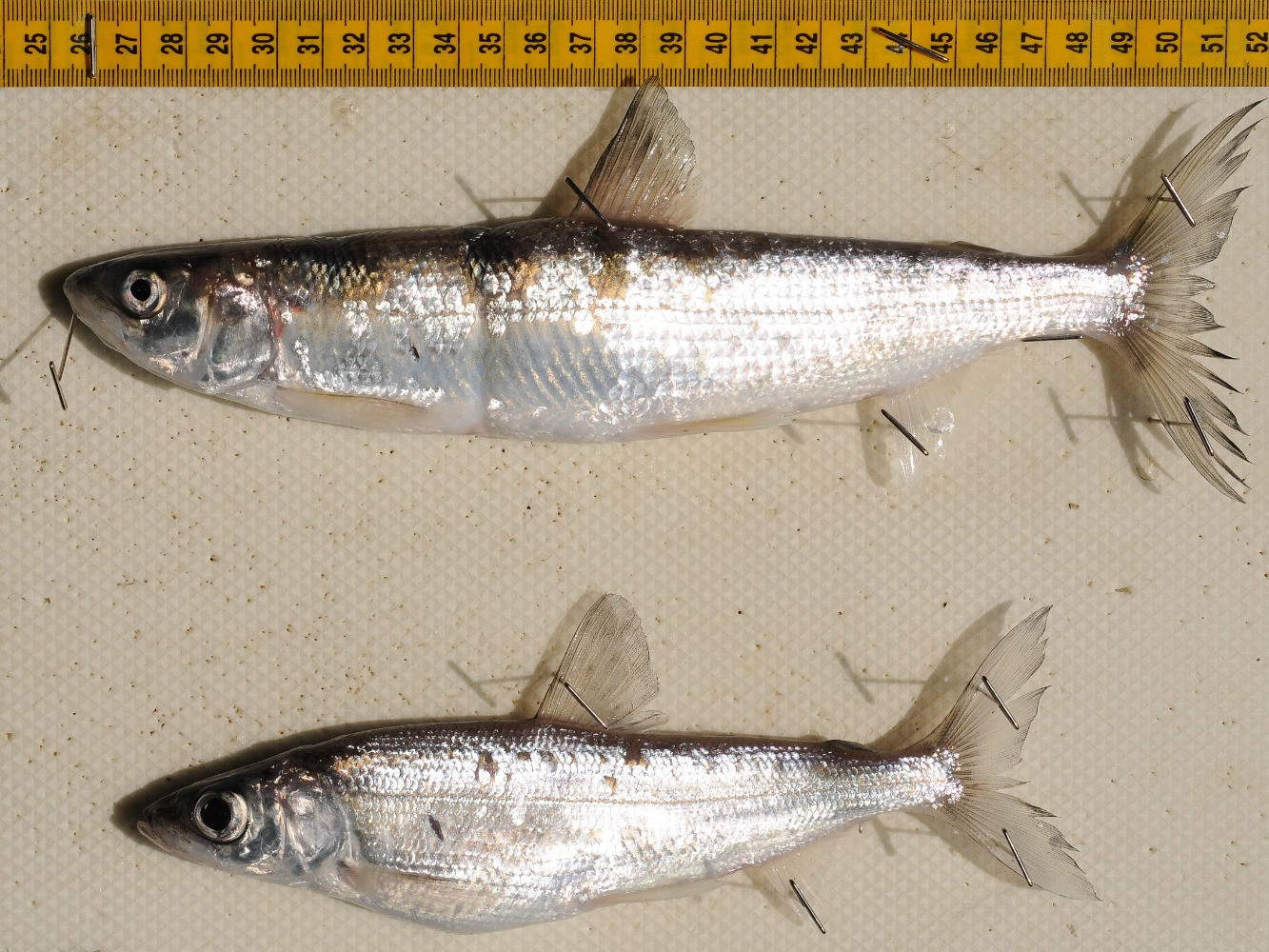
A shortjaw cisco (C. zenithicus, top) and a kiyi (C. kiyi, bottom) from the Thunder Bay region of Lake Superior. Credit: Andrew Muir.

